
|
Trainings
Effective Project Management in the Water Sector in Georgia: Implementation of the EU and EBRD Methodologies
Date: September 7, 2016 Tbilisi, September 9, 2016 Batumi Place: Tbilisi: Hotel Ambasadori, Ioane Shavteli
Turn, Tbilisi, Georgia, 15 participants Batumi: Hotel Era Palace, 77 Zurab Gorgiladze St, Batumi, Georgia, 16 participants
Organizers: NISPAcee and NALAG
Donor: SlovakAid
Training Objectives The training is organized within the project implemented by NISPAcee and
NALAG under the support of SlovakAid. The project utilizes the Slovak
experience in the implementation of projects in the water sector, financed by
the EU and EBRD funds. The objective is to train the participants in the
utilization of manuals developed under the project and train trainers who could
lead further similar trainings.
Target Group
On trainings took part representatives from Consulting Engineers, Contractors, Funding Agencies, Employers, Insurers, local Experts, Officials, Design Engineers and Operators of Waste Water Treatment Plants, local Governments, Ministries, NGOs, Manufacturing Organisations,representatives of the EU, EBOR and other donor organizations, as well as representatives from the Legal and other Construction Professions.
Duration 1 day
Language and translations
All materials were developed in English language. During the training English - Georgian interpretation was provided.
Topics of Training 1. Explanation of the Project Manuals and how to work with them. 2. Introduction to the FIDIC contracting procedures. 3. Environmental Impact Assessment. 4. Public Procurement Legislation.
1.Explanation of the Project Manuals and how to work with them
The Guidelines offers information related to the Tendering Procedures, its implementation in practice, issues and cases faced during daily work, as well as solutions or opportunities to find such solutions. The Guidelines describes the tendering and contractual environment and covers the most common forms of tendering and contractual procedures will be used on infrastructure projects in Georgia.
2. Introduction to the FIDIC contracting procedures The FIDIC Contracts Module has been designed to be highly practical to offer a complete up-to-date review of the effective understanding and use of the FIDIC Contracts currently in use. Primarily an overview of the FIDIC Contracts and forms were presented, focusing on the allocation of functions, particularly design and the allocation of risks.
3. Environmental Impact Assessment This part of the training describes EIA procedures and compares the practice in Europe under existing European Law and experience from EC practice.
4. Public Procurement Legislation
Comparing principles of PP Law in Slovakia, EU and Georgia was very useful also due to fact that country started with pre-accession dialogues with EU.
Profile of Trainers
Mr. Milan Oleriny is the Main Expert for this project. He is an acknowledged expert in FIDIC contracts and an esteemed published author in the field of International Construction Law, Tendering Procedures, Public Procurement Procedures, Contracts, Pricing and Claim Management. Mr. Oleriny lectures and tutors FIDIC courses in the Czech and Slovak Republics acting as a Procurement Expert, specializing in construction projects and water/wastewater projects. He has over 15 years’ professional experience in water and wastewater projects in Central and Eastern Europe, the CIS and Balkan countries. Thanks to his good knowledge of both English and the Russian language he provides services in multicultural surroundings all over the World. As an Expert and Author of 5 books, he has experience with EU-based Infrastructure Projects (Water, FS, and WWTP) for Tendering Documents, and Contract and Evaluation Procedures as well as experience with PRAG Conditions for EU-based Projects under the FIDIC P&DB and FIDIC RB Conditions. Mr. Boris Balogh is a legal expert. Within the project he utilizes his expertise in the approximation of EU legislation and especially in the comparison of the new EU directives in the field of EIA and Public Procurement and requirements on their implementation in the Georgian national legislation. He has obtained his knowledge and experience during his work as the Director of the Legal Department at the Slovak National Council and also at the Ministry of Environment and, at present, at the Ministry of Economy of the Slovak Republic.
ForewordGeorgia is in a critical state in the cleanliness of waste water and the building of waste, with a poor infrastructure and very low level of management. It is vital that the water sector increases its utilisation of foreign investments, EU and EBRD funds and the application of their methodologies in the planning and management of projects.
This is crucial for the improvement of the current situation and the implementation of EU directives and requirements in the water sector to improve the living conditions of the population in Georgia.
Improving water protection, and water and waste management is one of the main priorities of the country, due to the current critical situation in this sector. In addition, an Association Agreement has been signed with the EU. This critical situation has been confirmed via information from the Ministry of Regional Development and Infrastructure of Georgia, the Ministry of Environment and the Georgian project partner NALAG.
The effective management of water sector projects in Georgia, based on the EU and EBRD methodologies, is therefore the main objective of the project developed by NISPAcee.
Guidelines and Public Procurement in Georgia The Guidelines and Methodology ("The Guidelines”) prepared by NISPAcee are intended to assist Contracting Authorities in the country to prepare responsive Tender Documentsin conformity with Standard Documents used for EBRD projects, as well as for EU co-financed projects. Guidelines describe minimum standards of acceptable practice for public infrastructure construction projects in Georgia.
The Guidelines offer information related to the Tendering Procedures, its implementation in practice, issues and cases faced during daily work, as well as solutions or opportunities to find such solutions. The Guidelines describe the tendering and contractual environment and cover the most common forms of tendering, and contractual procedures will be used on infrastructure projects in the country. However, this will not cover the essential background tax information, local Laws and related specific conditions in the country and the impact of any legislation.
The provisions of the Guidelines should be observed by all parties involved in public infrastructure construction. The Tender Procedures and Contract Management processes should be structured to minimise the costs for all parties, including operators, consistent with the standards of behaviour required by these Guidelines.
Public Procurement and Tendering Procedures are a relatively new area in Georgia and, usually, the information in this area is obtained through non-professional channels. The Guidelines also serve groups that are not involved on a daily basis in Public Procurement, but still need to receive professional information in this area.
Objectives of the Guidelines The document is primarily intended for Public Procurement practitioners, providing them with a suitable tool to ensure an efficient and consistent practice of the Public Procurement procedures. The Guidelines will also serve as training material in the context of procurement training activities for strengthening knowledge of Staff, associated with Public Procurement procedures. The Guidelines establish high and significant benchmarks and encourage high ethical standards for theUnited Water Supply Company of Georgia, managed construction projects in order to achieve better Procurement Practices, higher productivity, high-quality construction works, better working conditions and the avoidance of malpractice, with significant benefits to the entire Contracting Authority. All other entities and local municipalities are therefore encouraged to apply the principles outlined in these Guidelines taking specific conditions of their project into consideration.
Although the Guidelines primarily address standard methods of procurement and delivery, they also seek to actively encourage innovation, especially regarding Contract Management due to changes in local Laws, especially in Public Procurement Law and Decrees. The parties to these Guidelines recognise that a high standard of performance can be achieved by encouraging innovation and co-operative practices, which lead to better quality projects, lower costs over the life of the infrastructure and better value for money.
It should be appreciated that the Guidelines are an attempt to bring to the attention of public entities, important provisions in Tendering Documents. However, it is our expectation that by reading these Guidelines, public entities will find it easy to understand the relevant Tender Documents, also for specific requirements in the construction infrastructure projects in which they are participating.
However, in some cases, it might be confusing for practitioners who have experience from previous projects based on Georgian Public Procurement Law in some wording (Employer/Contracting Authority etc.); consequently the glossary from EBRD and/or EU shall be taken and used.
Barriers to the Implementation of Guidelines and how to overcome themTo increase the uptake of investments and behaviour in the industry and construction generally, public policies are necessary to eliminate the barriers that discourage stakeholders from pursuing projects, also in the water sector. Beyond the removal of barriers, proactive instruments are imperative to enhance users’ motivation and incentives to adopt more efficient technologies and practices.
Description of the barriers to the implementation of water projects Though the policy barriers to implement experienced and recognized practices in industry projects, as well as in public buildings, have largely been dismantled, there are still significant barriers that exist to the implementation of existing and/or future investment projects. The ability to increase the market for water projects and services is still limited significantly by the barriers described below.
These barriers can be divided into three main groups: 1. Institutional, legal and regulatory barriers One of the areas where the implementation of methodology is complicated is related to the legal and contractual framework in which developers of water projects operate.
2. Information and technology barriers to implementation In addition to legal and contractual issues, there are also barriers related to the lack of financial and technical capacity within the potential service providers (Designers, Engineers) and construction companies. These hinder investment, which results in a lack of prepared projects in the water sector being taken up and services and/or works provided.
3. Economic and financial barriers to implementation While the barriers outlined above are specific to many municipalities, there are also two primary barriers to the nationwide uptake of the measures in the water sector and projects.
Removing the barriers on the market Outcomes which would indicate these barriers have been overcome Following on from the analysis of the barriers to the implementation of practicable Methodology for the preparation and evaluation of projects in the water sector, it is possible to draft outcomes that would demonstrate that the project has overcome these barriers. From there, it is then possible to outline the outputs and activities that would lead to the outcomes. The table below outlines the barriers that this project plans to overcome and the outcomes that will demonstrate that progress has been made in creating a market with implementation for water projects in Georgia.
Tender Documentationand its role in Tendering ProceduresTender Documents are the written details of the goods and servicesrequired and should include a copy of the proposed contract between the CA and the Contractor. Tender documents should specify the CA requirements clearly and indicate the criteria for evaluation, including the weighting given to each evaluation criteria. All parties should have regard to the costs of tendering to the industry and the community at large, and avoid calling repeated rounds of tendering.
The tender documentation should specify the timelines for the acceptance of Tenders and notification of the successful Tenderer. Where these timelines are to be altered, the Tenderers should be notified accordingly. If there are to be significant delays then Tenderers are to be given the opportunity to vary their tender.
Standard Tender Documents and their role in Variation Order Procedure How can we avoid claims in the construction business? Are there differences between excusable and non-excusable claims? Is the Contractor even entitled to apply claims on WWTP projects due to signed Contracts taking the SCC into consideration? One of the main targets regarding Standard Documents on Tendering Procedure is therefore to minimise the Contractor´s request on time and/or additionally money in the form of Claims.
To consider the reasons for and the origin of construction industry claims it is necessary first to examine the complex nature of construction - especially for P&DB related projects - and the effects of claim management of the different legal jurisdictions which may be encountered. Claim and Disputes represent a risk of loss to both parties to any construction Contract and they are themselves often the result of other risks, or error and of the unexpected. It is necessary, therefore, to also consider the wide-ranging risks which exist and how they can be managed.
Tender Documents under EBRD proceduresThe Procurement Policy Department of EBRD develops and updates procurement policies, rules and methods. It is also responsible for maintaining a procurement quality assurance system, reviewing complaints and publishing procurement information. The Procurement Department maintains international cooperation with other international financial institutions, undertakes policy dialogues with the Bank’s Countries of Operations for the improvement of public procurement, builds institutional capacity of the institutions in the Bank’s countries of operations and hosts conferences on project procurement topics.
The Standard Tender Documents (STD) have been prepared by the EBRD for use by the Bank’s clients for the procurement of goods, works and services on Bank-financed projects and the FIDIC forms now cover a wide range of projects. Use of these STDs is mandatory for open tendering and competitive selection procedures. However, the Bank is not a party to the Contract and does not accept legal responsibility for the adequacy of the Contract forms contained in these documents. Clients are therefore advised to ensure that the Contract conditions are suitable and complete in respect of any particular contract.
Other international financial entities in the country, except EBRD, EC, WB, KfW and SIDA are acting EIB (European Investment Bank) and are actually preparing water projects in Kutaisi. A weakness in the Tender Procedures in this case is due to the fact that the Bank is "flexible” in using Standard Tender Documents: therefore the procedures either of the ADB or the WB will be used. However, the Bank set up only General Guidelines for Procurement Procedures, using as a contract base mainly FIDIC Conditions. This flexibility incurs problems for all participants with a variety of possibilities for TD, and therefore it is complicated to prepare and implement standardisation for procedures and this might vary from case to case.
Tender Documents under EU proceduresEU Works Contracts cover primarily the execution of Works or work related to one of the activities referred to in Annex II to Directive 2004/24/EU or its realisation. "Work” means the outcome of building or civil engineering works taken as a whole, which is sufficient in itself to fulfil an economic or technical function. Works Contracts are usually concluded by the partner country with which the European Commission has a financing agreement (under indirect management).
Comparing the Standard Tender Documents of EBRD and EU Standard Procedures there are differences linked primarily with several financial resources and modalities for financing for EU projects. Therefore EU Standard Documents offer possibilities for financing, either from the EU Budget or EDF projects. Based on different resources and different contracting, authorities-prepared and submitted documents offer more possibilities and variety. As a relevant support to all EU Tendering Procedures there is a PRAG (Practical Guide) for EU financed investment projects with many useful remarks and notices for preparing Standard Tender Documents.
Practical Guide (PRAG) and how to use it Procedures established by the European Commission for procurement and the awarding of grants under the relevant EU external aid programmes are consolidated in a Practical Guide (PRAG). A PRAG explains the contracting procedures applying to all EU external actions financed from the EU general budget (the EU budget) and the European Development Fund (EDF). Any deviation from PRAG and its Annexes requires either derogation or an exception from the relevant European Commission services in accordance with internal rules.
PRAG provides users with the comprehensive information necessary to undertake procurement or grant procedures from the very first steps to the award, signature and implementation of contracts. The annexes cover both the award phase and the execution of contracts. The Guide outlines the contracting procedures to be used in direct management and indirect management with ex-ante approval or with ex-post controls by the European Commission.
The financing of external actions is governed by the applicable EU and EDF Financial Regulation, the common rules and procedures for the implementation of the Union's instruments for financing external action (CIR) and by the relevant basic acts, for example, programme regulation, such as the DCI, ENI, IPA II, or EIDHR for actions financed from the EU budget, and the Cotonou Agreement for actions financed from the EDF.
Structure of presented Guidelines The main importance has therefore 6 separate Tender Documents A1-B3 (Dossiers) prepared, based on standard EBRD and EU Tendering Procedures as follows.
Tender Documents for Design Works
Part A2 Tender Documents for Site Supervising
Part A3 Tender Documents for Works (Construction)
Part B1 Tender Documents for Design Works
Part B2 Tender Documents for Site Supervising
Part B3 Tender Documents for Works (Construction)
Agenda:
9:00 - 10.30 Explanation of the Project Manuals and how to work with them Milan Oleriny
10:30 - 10:45 Coffee break
10:45 - 12:15 FIDIC - introducing to Contract Conditions Milan Oleriny
12:15 - 13:15 Lunch
13:15 - 14:45 Environmental Impact Assessment Milan Oleriny, Boris Balog
14:45 - 15:00 Coffee break
15:00 - 16:00 Public Procurement Legislation Boris Balog Training in Tbilisi:
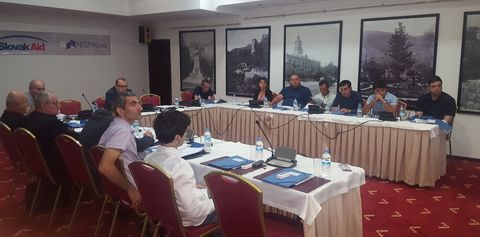 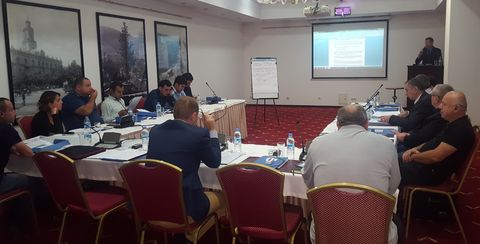  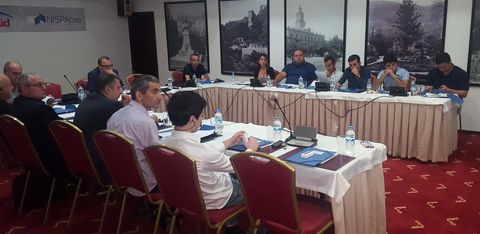 Training in Batumi:
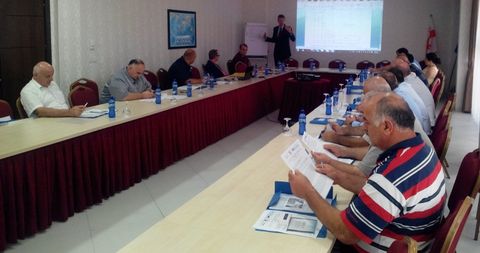 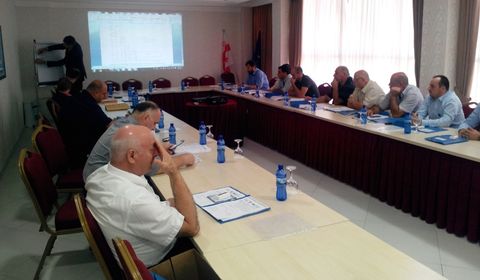 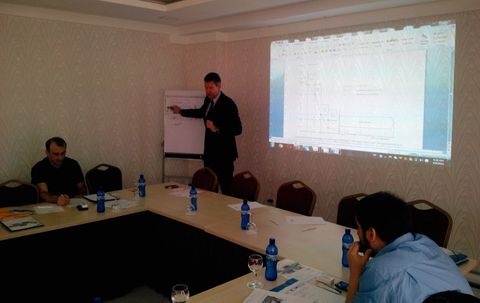
|
© NISPAcee 2021
Web design and administration by Jan Andruch / FLOYD-Studio.com